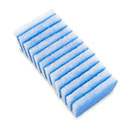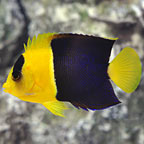
Additional locales and sizes may be available!
Additional locales and sizes may be available! Email me when available|
Product Notes:
· We cannot ship this product to Pennsylvania. |
Quick Stats
What do these Quick Stats mean? Click here for more information
What do these Quick Stats mean? Click here for more information
Overview
The Horseshoe Crabs dig through sand and gravel in search of worms and any organic debris. It will move the substrate around almost nonstop in its search for food. They are reef safe, but when they attain a large size, can be harmful to fish and invertebrates, especially worms and clams.
Although it may find some food scavenging, its diet should be supplemented with meaty items such as pieces of squid and shrimp.
Approximate Purchase Size: Small: 1" to 2"; Medium: 2" to 3"; Large: 3" to 4"








